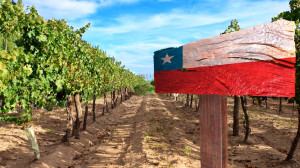[July 13, 2020] Global wine sales are likely to drop by up to 13.6% during 2020 as a result of the Coronavirus pandemic, according to the drinks research body IWSR, and take longer to recover than other drinks categories such as beer and spirits.
The wine cateogry went into Covid-19 with 1.1% fall in volume decline around the world and that will drop by as much as 13.6% in 2020 – with ecommerce sales not making up for the big losses from the on-trade, according to a report in The Buyer.
However, the recovery for wine is likely to be a lot longer than beers and spirits and is not guaranteed to even get back to 2024 levels for some time. CAGR levels for wine are forecast to be down 0.9% between 2019 and 2024.
During a joint webinar held with Vinexpo to update the trade on the likely impact of Covid-19 on global drinking trends, the IWSR’s chief executive Mark Meek said the reason why wine was less likely to bounce back was that all the underlying issues such as climate change, tariff wars and Brexit, are all going to be there even with a vaccine for Covid-19.
Sparkling wine, though, is likely to buck the trend and although is forecast to decline by as much as 15% in 2020 on the back of years of growth, it is more likely to return to 2019 levels as demand for Prosecco will come back quickly and Champagne will once again show how resilient it is. This is thanks mainly to strong domestic sales, particularly in the second half of the year.
“In France Champagne is less about celebration,” said Meek.
But the picture will vary considerably around the world over the next four to five years. Europe, for example, is on course for 0.4% CAGR decline between 2019 to 2024, with the US expected to drop by 0.9% CAGR. The Asia Pacific is on course for 10.8% volume declines in 2020, excluding baiju, but should return to 2019 levels by 2019.
All of Europe’s key wine markets – France, the UK, Spain, Italy, are set for double digit declines in 2020.
The UK did not go into Covid-19 in a strong position, said Meek, with duty levels up 72% in the last 10 years, but even with the boom in online and retail wine sales, the total UK still wine market is expected to be down 9.7% and sparkling by 11.8% in 2020. Although there will be a considerable bounce back in 2021, this will be short lived with the underlying UK trade issues resurfacing. CAGR will be down 2.1% from 2019 to 2024 for still and sparkling wine.
China is the country to watch when it comes to online with 30% of wine now sold through ecommerce, continued Meek. The global market for online is now worth $21bn across the world’s top 10 core wine markets, which is twice the size of the global travel retail market, and is set to grow to nearly $50bn by 2024, says the IWSR. China already accounts for $8b of the $21bn.
Wine outstrips sales of beers and spirits and will continue to grow its share in the coming years, says IWSR. Wine sales were up 18% online in 2019 versus 1% for the overall global market.
Organic wines are also expected to grow – albeit from a low base – by 8.8% CAGR to 2024.
Looking ahed Meek said the wine category should look closely at what is happening with RTDs (“ready to drink”), and the 19.6% increase in volumes and 18.8% rise value in 2019. Are there opportunities for wine to make RTD formats and push more into cans.
The IWSR also shared the trends it believes will have the long term impact on the drinks industry long after Covid-19. They include:
- further long term increase in cans – particularly if outdoor becomes even more important in the on-trade and big events.
- shifts in the on-trade with more demand for delivery and out of restaurant/ at home experiences.
- a reduction in business and leisure travel.
- the need to get much better at digital engagement will determine future winners in the sector.
- big threats to wine tourism.
- working more from home, and impact on every day lunch time/evening on-trade traffic.
- All of those have clearly seen much growth during lockdown, along with the big swing towards big brands.
Meek claimed the industry needs to start thinking less about being driven by production trends and look more at building strong, commercially and consumer relevant brands that are marketed well. Those businesses that can do that will be well placed to succeed over the coming years.



